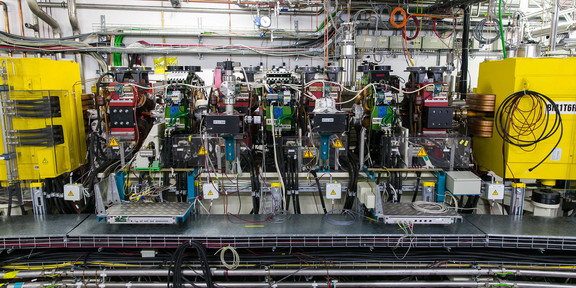Storage Ring Based Light Sources - Status and Future Trends
- Colloquium

Storage Ring Based Light Sources - Status and Future Trends
From DELTA to BESSY III
Storage ring-based light sources are at the heart of a multitude of large-scale research facilities that contribute to answering fundamental questions in a wide range of disciplines and to solving the major challenges facing society. Starting with the parasitic use of synchrotron radiation from electron accelerators in nuclear and particle physics, storage rings with ever higher performance, i.e. "smaller emittance" and thus "higher brilliance", were developed for exclusive use as light sources. This development seemed to have reached its temporary peak with the extremely successful and widely used sources of the so-called third generation. However, based on concepts already developed in the 1990s, a new, fourth generation of storage ring light sources has been developed in recent years, which, based on so-called multi-bend achromatic magnet optics, allow a further reduction in emittance that was not thought possible at the beginning of this millennium. With MAX IV (Sweden), SIRIUS (Brazil) and the ESRF-EBS (France), three of these novel sources are already in operation, and upgrades of existing facilities, but also the construction of completely new facilities, such as BESSY III, are under realisation or planned. In addition to the reduction of emittance, another essential parameter of such light sources is the time resolution, determined by the pulse length of the emitted synchrotron radiation, and the time structure, i.e. the pulse repetition frequencies. Here, too, many new concepts have been developed in recent years, such as the Transverse Resonant Island Bucket Mode at BESSY II, or the generation of shortest pulses or intense coherent radiation at DELTA.
In this talk, an outline of the development of storage ring-based synchrotron light sources from the first to the fourth generation and the methods for generating shortest pulses or variable time structures will be given. The challenges arising from the combination of very small emittance and short pulses will also be discussed. Of course, the presentation will also include some of my own experiences at DELTA and of the further development of BESSY II to the successor source BESSY III.








